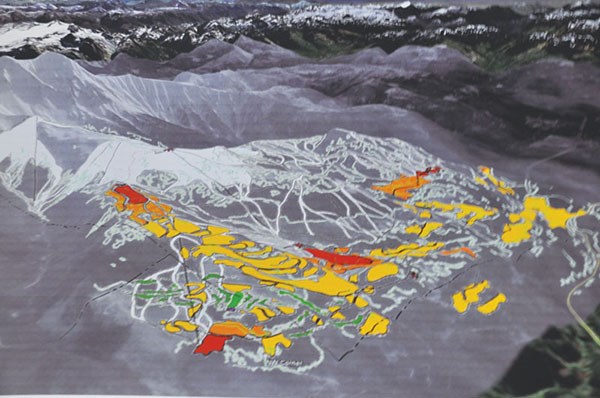Garibaldi at Squamish (GAS) proponents support the intent of a recent provincial government move that would have exempted ski-resort developments from the environmental assessment process — even though their project wasn’t among those that would have been exempted.
Wolfgang Richter, vice-chair of the company hoping to develop a four-season resort on Brohm Ridge, on Friday (April 18) said he supports the idea of reducing the amount of duplication in the approval processes for recreational developments.
Last week, B.C. Environment Minister Mary Polak announced that the government was exempting ski resorts and sweet-gas developments from the environmental assessment process because separate review processes for such projects are already carried out by other ministries.
The Ministry of Forests, Lands and Natural Resource Operations, for example, has an established master plan review process for ski resorts.
The policy change, announced on Monday (April 14), was rescinded on Thursday (April 17) after First Nations leaders argued that they hadn’t been consulted on the changes. Polak apologized for the oversight and said her government would back away from the move until after consulting with First Nations leaders.
Interestingly, had the change gone through, the environmental assessment process for GAS — which has been in the approval pipeline in its various forms for almost two decades — would have continued.
Richter said he applauds any move to streamline the approval process, though he was puzzled that GAS — the only ski-resort project currently in the approval pipeline — would not have benefitted from the change.
He said he would have thought GAS would have been “grandfathered” in and pushed through under the initiative.
“I applaud the wisdom to try and streamline it a bit,” he said. “Frankly, we were in process in 1995 when the Environmental Assessment Act was legislated, and we started our process in February 1995, so when does the word ‘grandfather’ kick in?
“The policy that I filed my expression under was called the Commercial Alpine Ski Policy, which was a Lands Ministry initiative that deals with land use,” he added. “It’s industry-specific, whereas with the more generic process, half the time we’re trying to explain to the bureaucrats what a ski resort is.
“I don’t know why we were excluded from the exclusion… I’d like to hope that in between here, there’s a halfway somewhere. There’s been a statement made that these things should move along a little quicker and I would agree with that.”
GAS proponents recently asked the B.C. Environmental Assessment Office (EAO) to extend the deadline for supplemental information to be received on the proposal from June 2014 to June 2015.
That request came after Richter said GAS officials planned to exclude about one-third of the land, or some 4,000 acres of Crown land near Brohm and Cat lakes from their development master plan. The proponents said that because of the change, they needed more time to prepare their plan and have it properly assessed.
EAO officials received the request in the form of a letter from David Negrin, GAS chief executive officer, on March 3. The EAO is considering the company’s request and a response, once finalized, will also be posted on the EAO website,” an EAO official wrote in an email.
Richter said with the Sea to Sky Gondola opening on May 16, he’s excited about the future of the tourism and recreation industries in Squamish.
“I think a month from now things are going to start to change when you see that gondola open. The branding thing is very interesting, and we’re hoping to make some progress this year, too.”



